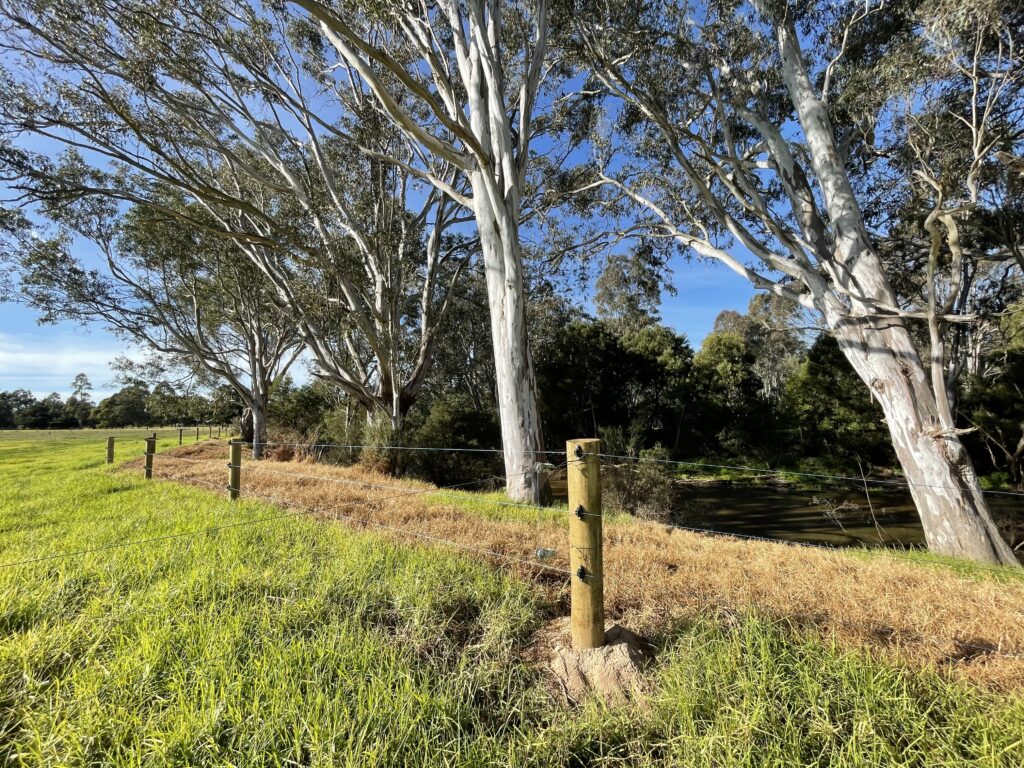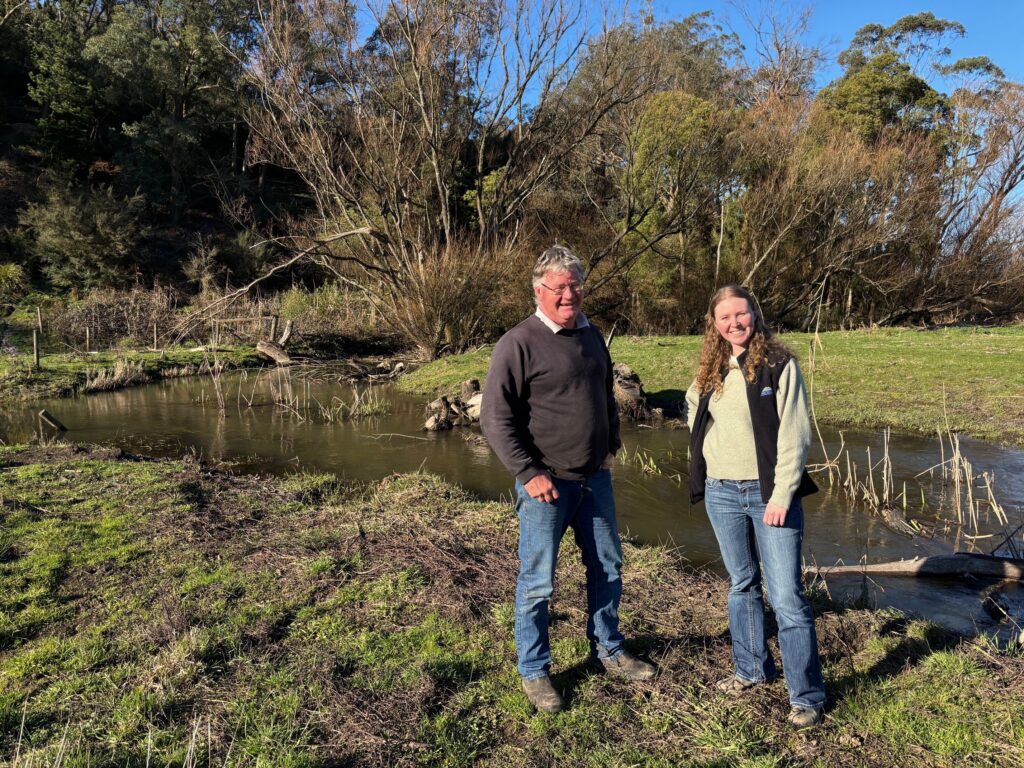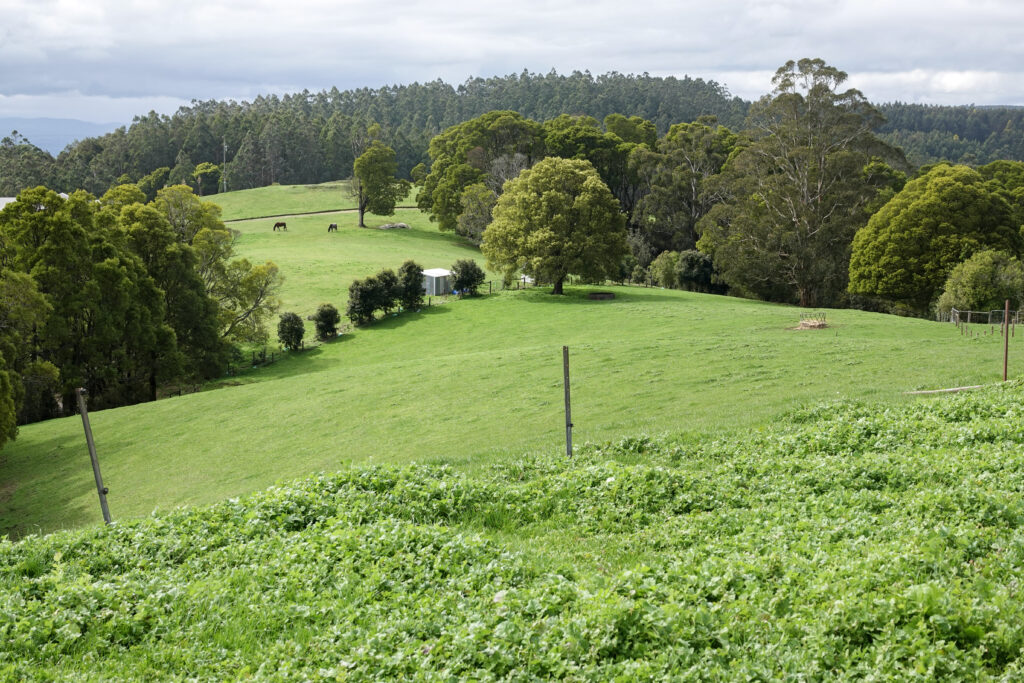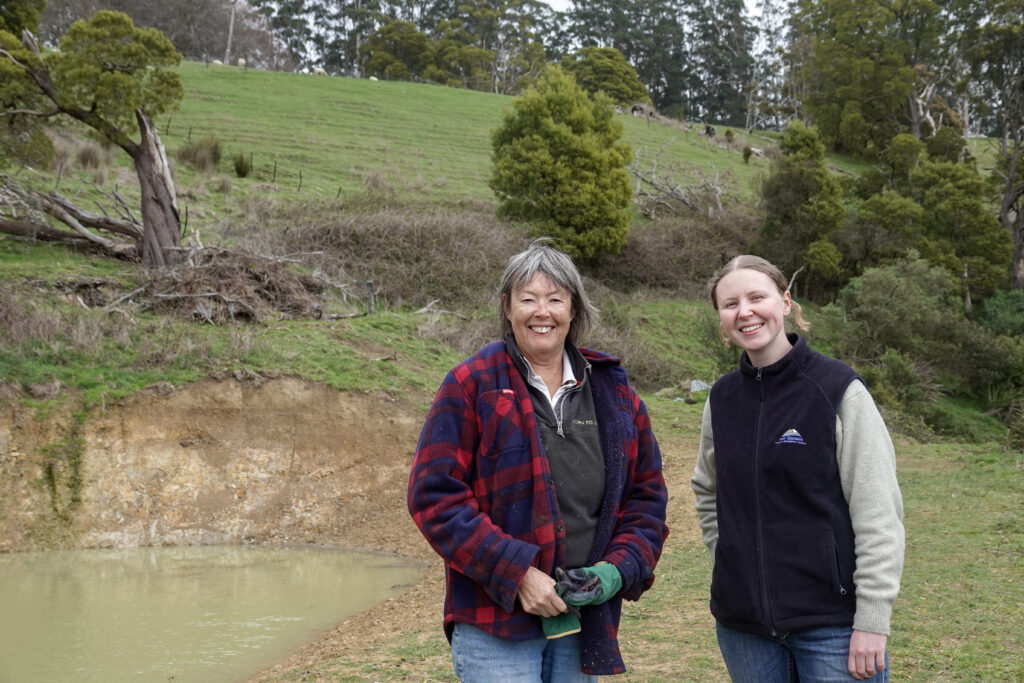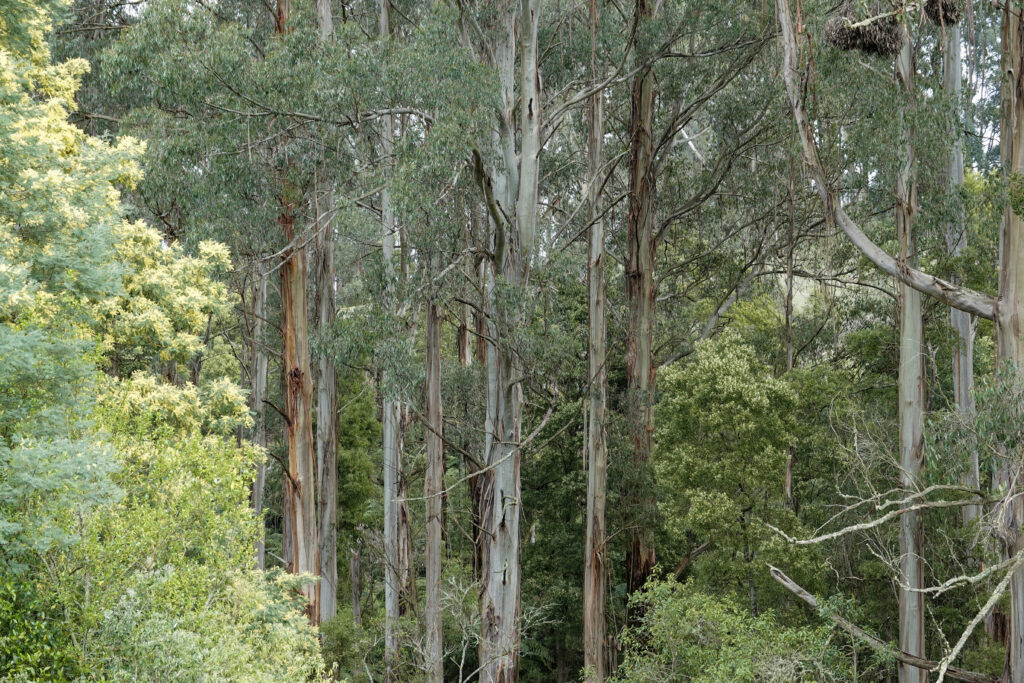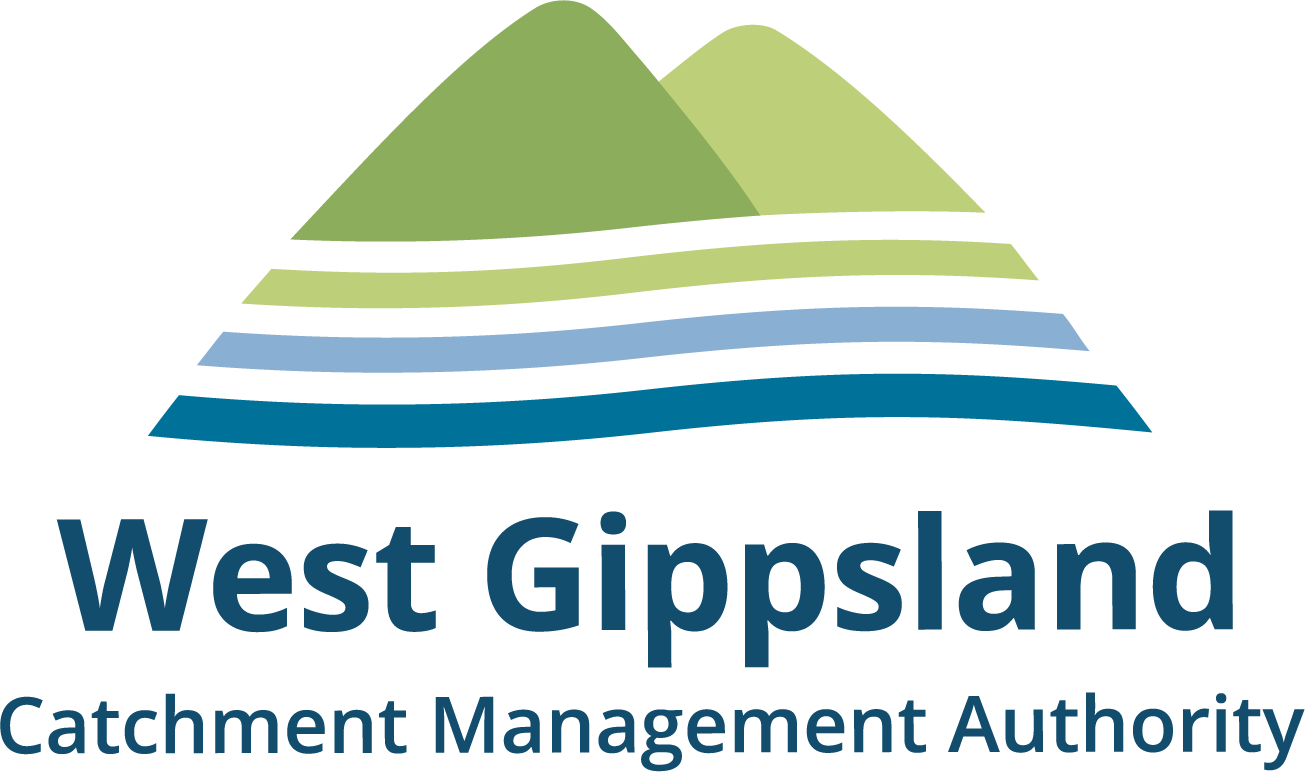Keeping the cows out and the wildlife in
Over 300 hectares of valuable biodiversity areas on agricultural land will be fenced to protect waterways, remnant vegetation, threatened species and livestock thanks to West Gippsland Catchment Management Authority (the CMA)’s farm fencing grants.
“Fences are a practical solution to protecting biodiversity and livestock – but they can be expensive, especially if you’re trying to fence-off a long, meandering creek,” explained Sam Shannon, Sustainable Agriculture Facilitator at the CMA.
“The farm fencing grants help with the cost of fencing materials and labour so farmers can protect waterways and ecologically sensitive areas on their properties while also improving the management of farm operations.”
Delivered under the Climate Smart Farmers program, the grants are a partnership between farmers, the CMA and in many cases, Landcare.
“Many of the landholders will use the funding to continue existing biodiversity protection efforts, such as willow removal, while others have joined forces with local Landcare groups to combine the fencing work with revegetation projects.”
In total, 50 kilometres of fencing will be installed at properties across the catchment.
Farmer and ‘forest steward’ Sue Neales is using the grant to protect the high ecological value of her 320 acre beef and sheep farm in West Gippsland. Situation high on the hills of Mt Worth, the unique property is surrounded by towering Mountain Ash and the ancient fern gully rainforests of Mt Worth State Park (Bunurong Country).
Sue, together with her partner Rob Wiencke, plan to transform an exposed area of paddock high on a hilltop into valuable shelter, shade and wind protection for cattle by fencing and revegetating the area with species such as area with species such as Messmate, Mountain grey gum, manna gum and Strzlecki – eucalyptus species that once dominated the landscape before logging in the early 1900s.
The couple would also like to see if it is possible to return Myrtle beech and sassafras trees in their 200 acres of privately-owned cool climate Mountain Ash (eucalyptus Regnans) rainforest; two timber species that have disappeared completely from the Mount Worth ecosystem since logging days and which a large deer population makes it difficult to reestablish.
Where the land descends steeply into thick bush, an eroding gully will be re-fenced and planted out with native plants to prevent further erosion and reduce sediment flowing into Moonlight Creek, a tributary of the Tarwin River.
Finally, the main farm dam will be completely fenced off to reduce erosion and create a haven for wildlife.
“Fencing the dam will keep the livestock and feral deer out so we can plant native trees and shrubs and connect the area to surrounding bush,” said Sue, who is being supported by the Mt Worth and District Landcare Group.
“Hopefully it will become an oasis filled with birds, fish and wildlife.”
In addition to enhancing biodiversity value, the plants surrounding the dam will help to stabilise a steep slope and prevent a landslip into an adjoining property. Reeds, rushes and other native grasses will also act as a filtering system, ensuring high quality drinking water that is essential for livestock health.
“We couldn’t have afforded to do these projects without the farm fencing grant. It’s a big help,” concluded Sue.
Across the other side of the West Gippsland catchment, Andrew and Alison Missen are taking meaningful steps to protect the health of Merrimans Creek by fencing it off to limit livestock access and crossings.
Using the grant, the Missens will fence 1,150 metres of creek frontage to help reduce erosion, improve water quality and conserve the riparian habitat along the waterway which flows through their Hiamdale property and borders the Merrimans Creek Flora Reserve on Gunaikurnai Country.
“These grants demonstrate how partnerships between the CMA, farmers and Landcare are a winning combination for both the environment and agriculture and contribute to the CMA’s vision of a healthy and resilient catchment,” said the CMA’s Sam Shannon.
“Once the fences are up, we’ll start to see natural regeneration of the land with plants growing and wildlife returning. In the future, as trees grow, we’ll see more shade and shelter for livestock while the overall environmental value and health of the property improves. Everybody wins.”
The $1.68m Climate Smart Farmers project is supported by the Australian Government through funding from the Natural Heritage Trust under the Climate-Smart Agriculture Program.
West Gippsland CMA is responsible for over 40,000 kilometres of designated waterways across the region and delivers programs for healthy and resilient catchments. All these waterways flow to the Victorian coast, discharging through the Gippsland Lakes, or directly into Bass Strait and the Southern Ocean.
Become a river lover
Find out more about the work we do and sign up to our e-news for updates, you can also sign up for Environmental Water updates.
